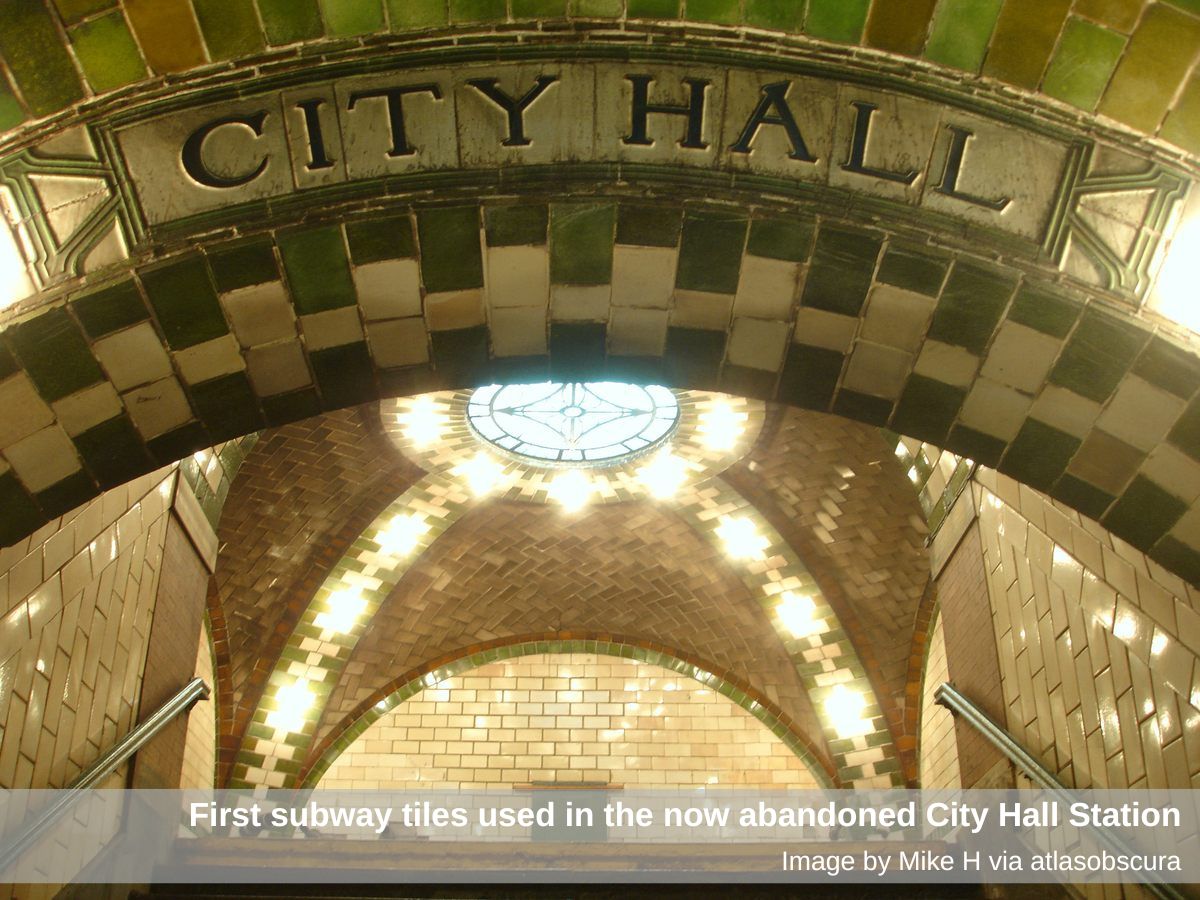Subway Tiles – All Aboard This Classic Tile Trend

We’ve long understood that subway tiles are practical, timeless, and work in interiors of all types and with subway tiles one of the most popular trending tiles for use in not only Australian spaces, but also in spaces around the world maybe it’s time to take a closer look at this design gem and learn a little bit about it.
Why is it called a Subway Tile?

Oddly enough the name Subway came from the place the very first Subway tile was designed for and used. In 1904 architects and designers Christopher Grand La Farge and George C. Heins were given the following design brief; design a surface that is durable, low maintenance and bright for New York’s first subway station. Heins and LaFarge knew what materials would stand up well to the heavy-duty cleaning and scrubbing that would be required and worked with the ceramic-producing firms Grueby Faience Company of Boston and Rookwood Pottery of Cincinnati to bring their idea to life; a tile with a glazed, glossy finish and slightly curved edges. This glossy finish would not only reflect the light and give the station a friendly, safe feel but it would also be easy to clean and resistant to staining and so the Subway Tile was born.
Why didn’t it stay underground?
Following its unveiling in New York, the subway tile went on to appear in other underground transportation hubs around the world such as The Tube in London and the Metro in Paris. City dwellers in the Victorian era valued cleanliness and good hygiene, and these glossy white tiles exuded a sense of purity.
Due to this association, the popularity of subway tiles soared. It wasn’t long before the humble subway tile emerged from underground and became a trend that spread quickly in both residential and commercial interiors, particularly kitchens and bathrooms, where a “hygienic” look was needed.
Are Subway Tiles Still Popular?
Subway tiles have been a popular wall covering since its early beginning in New York. More than a century later and it is safe to say that the Subway Tile isn’t a fad as they are still being used today and will no doubt continue to be used for decades to come. It’s because of its popularity that the Subway Tile continues to be reinvented to keep up with current trends, from a change in the traditional proportions to different materials, textures and finishes, but we’ll go into that later. With its inherent timelessness and classic style, the Subway tile has not only survived but has thrived throughout the twentieth century and well into the new millennium.
Are Subway Tiles A Particular Size?
The short answer to this is no, however, when it was first unveiled the sizing of the Subway tile was 150mm x 70mm (or 6”x3” in the old language) although because of the specific ratio of 2:1 that defined the size the Subway tile category grew to include 200mm x 100mm (8”x4”) format. Fast forward to more recent times and the humble subway tile has continued to evolve. Nowadays when we hear the term Subway Tile we instantly equate the term to any small format rectangle tile. Therefore, it seems that small and rectangular appears to be the only stipulation when it comes to defining the size of Subway tiles.
On a side note, while traditionally the Subway Tile is considered to be rectangular there is some thought that square tiles, which offer a fresh look on the classic shape, should also be included in the Subway tile conversation. Whether or not they should be, I will leave that up to you.
Gloss White Only?
While a gloss white finish is still a popular choice when it comes to Subway’s tile it’s not the be-all and end-all. As mentioned above a part of the subway tiles reinvention over time has been the number of different materials, textures and finishes that it is now available in.
The original Subway Tile is ceramic tile with a gloss white glaze, however, nowadays Subway tiles are available in a variety of materials, like porcelain, glass, natural stone, and marble. Added to this Subway tiles don’t always have to come in its traditional white with numerous colour options available. But why stop there, how about a matt, textured or rippled surface? Or maybe you prefer a bevelled or handmade edge instead of the original curved edge. Your options are endless.
It’s this different variety of colours, styles and materials available today that make it easy to find a subway tile that will fit with any design style and make the most sense in your space.
So what laying pattern should I use?
One of the best things about Subway tiles is how versatile the design layout can be. With these tiles, you can create different patterns and looks that will make every project look unique, even if you have used the same tile. But what is the subway tile pattern?
Whether you use a traditional brick pattern, a stacked pattern or a herringbone variation you need to make sure that the dimensions of the tile allow for it. While brick patterns or stacked allow you to use any size subway tile, the more complex herringbone pattern should only be used with a tile where the dimensions are modular, meaning that the length of the tile should be equally divisible by the width.
Whatever pattern you decide to use will make an impact on how your subway tile will look.
Are subway tiles expensive?
Subway tiles can be quite affordable, especially if you stick with the traditional-sized white gloss design laid in a brick pattern, but that cost will rise if you decide to use a different colour, finish material, or laying pattern. However, it is important to remember that the size of the area you are tiling may make that difference in price a drop in the ocean compared to the impact that the finished job has.
In closing
Now that you know the history and general characteristics of traditional subway tile, its reinvention over time and how it can be used, forget what you have learned. One of the key features when using a modern subway tile is pushing the boundaries to find unique new ways to showcase subway tile design.
At Erneste Tile Concepts we offer an extensive variety of subway tiles because we know that it can sometimes be difficult to choose between the timeless classic or a more modern interpretation.

